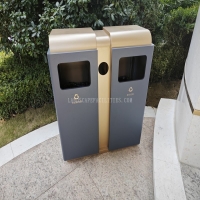Welcome to the website for landscape facilities products and knowledge.
How does the table’s design accommodate the use of tablecloths or other coverings?
The integration of tablecloths and protective coverings represents a crucial consideration in modern furniture design, blending aesthetic appeal with practical functionality. Contemporary tables incorporate specific design elements that ensure coverings remain secure, visually pleasing, and properly positioned throughout use.
Table edges play a fundamental role in tablecloth accommodation. Designs featuring slight lips or beveled edges, typically measuring 1-2 centimeters in height, create natural barriers that prevent coverings from slipping during daily activities. These subtle raised edges are particularly valuable in high-traffic dining environments where frequent movement might otherwise displace traditional coverings.
Material selection significantly impacts how tables interact with coverings. Non-porous surfaces including sealed wood, tempered glass, and polished stone provide smooth foundations that allow tablecloths to lay flat without wrinkling or catching on rough textures. These surfaces additionally facilitate easy cleaning beneath coverings while preventing moisture damage to the underlying table structure.
Structural considerations extend to table legs and support systems. Center-pedestal designs offer distinct advantages over traditional four-legged configurations by eliminating corner obstructions that typically cause fabric bunching or uneven draping. This architectural approach ensures tablecloths hang uniformly around the entire table perimeter, creating elegant silhouettes particularly suited for formal dining settings.
Fastening mechanisms represent another innovative design adaptation. Some contemporary tables incorporate discreet magnetic strips or subtle clipping systems along their undersides, providing secure attachment points for specialty coverings without compromising visual aesthetics. These hidden solutions are especially valuable for outdoor applications where wind resistance becomes essential.
Table proportions directly influence covering compatibility. Standardized dimensions accounting for common tablecloth drop lengths—typically 10-12 inches for formal settings and 6-8 inches for casual use—enable manufacturers to create tables that optimize fabric presentation. This dimensional foresight ensures purchased tablecloths fit appropriately without requiring custom alterations.
Temperature regulation features have emerged in recent designs. Tables intended for regular covering use often incorporate discreet ventilation channels that prevent heat and moisture accumulation between the table surface and protective layers. This thoughtful engineering significantly extends the lifespan of both the table and its coverings by mitigating potential damage from condensation or heat transfer.
The intersection of design and functionality continues to evolve as manufacturers develop new solutions for tablecloth integration. From adjustable table edges that accommodate varying fabric thicknesses to integrated weighting systems for outdoor applications, modern table design demonstrates remarkable innovation in addressing the practical requirements of table coverings while maintaining aesthetic excellence.
Related search:

Recommendation
Double-bucket garbage bin, outdoor, metal, multi-color, powder-coated, double-bucket trash can